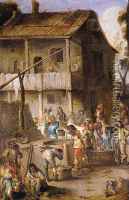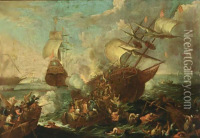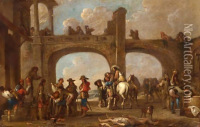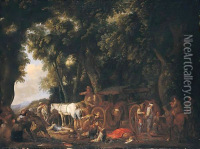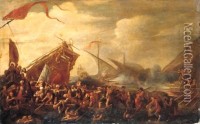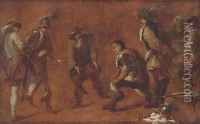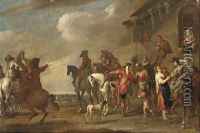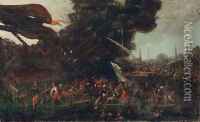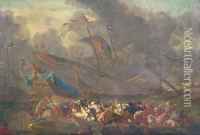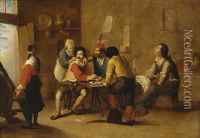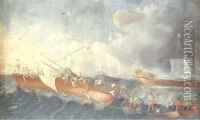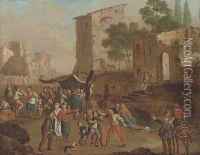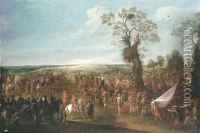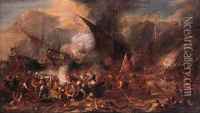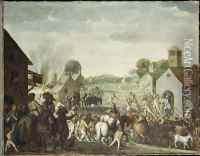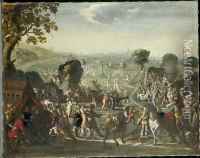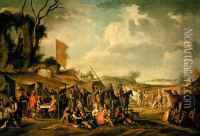Cornelis de Wael Paintings
Cornelis de Wael was a Flemish painter, engraver, and merchant who was born in Antwerp in 1592. He was part of the notable de Wael family, which included several artists, and he was the brother of Lucas de Wael. Cornelis is often associated with the Baroque movement and is known for his contributions to genre painting, battle scenes, and landscapes.
De Wael's early life was spent in Antwerp, where he became a master in the local Guild of Saint Luke in 1613. Around 1617, he moved to Genoa, Italy, which was a common destination for Flemish artists at the time. His move to Italy was likely influenced by the opportunity to work in a thriving artistic environment that was open to Northern European influences. In Genoa, he established himself as a painter and a merchant, which allowed him to build a bridge between the art markets of Italy and Flanders.
His works in Genoa often depicted everyday life, religious themes, and historical events. He collaborated with his brother Lucas and other artists, and his studio became a meeting place for Flemish and Dutch artists living in the city. Cornelis de Wael was instrumental in spreading the Flemish painting style in Italy, and his influence extended to local Italian artists as well.
De Wael's paintings were characterized by their dynamic compositions, attention to detail, and lively depiction of figures. He was skilled in creating a sense of movement and drama in his works, which was a hallmark of the Baroque style. His battle scenes are particularly noted for their realism and the vivid portrayal of the chaos of war.
In addition to his artistic endeavors, de Wael played a significant role in the cultural exchange between Northern and Southern Europe. He provided patronage and assistance to other artists from the Low Countries who came to Italy, helping to integrate their styles with Italian traditions and techniques.
Cornelis de Wael died in Rome in 1667, leaving behind a legacy that was appreciated in both his home country of Flanders and his adopted home of Italy. Today, his works can be found in various museums and collections around the world, showcasing his ability to blend Flemish artistic heritage with the Baroque spirit of his time.
